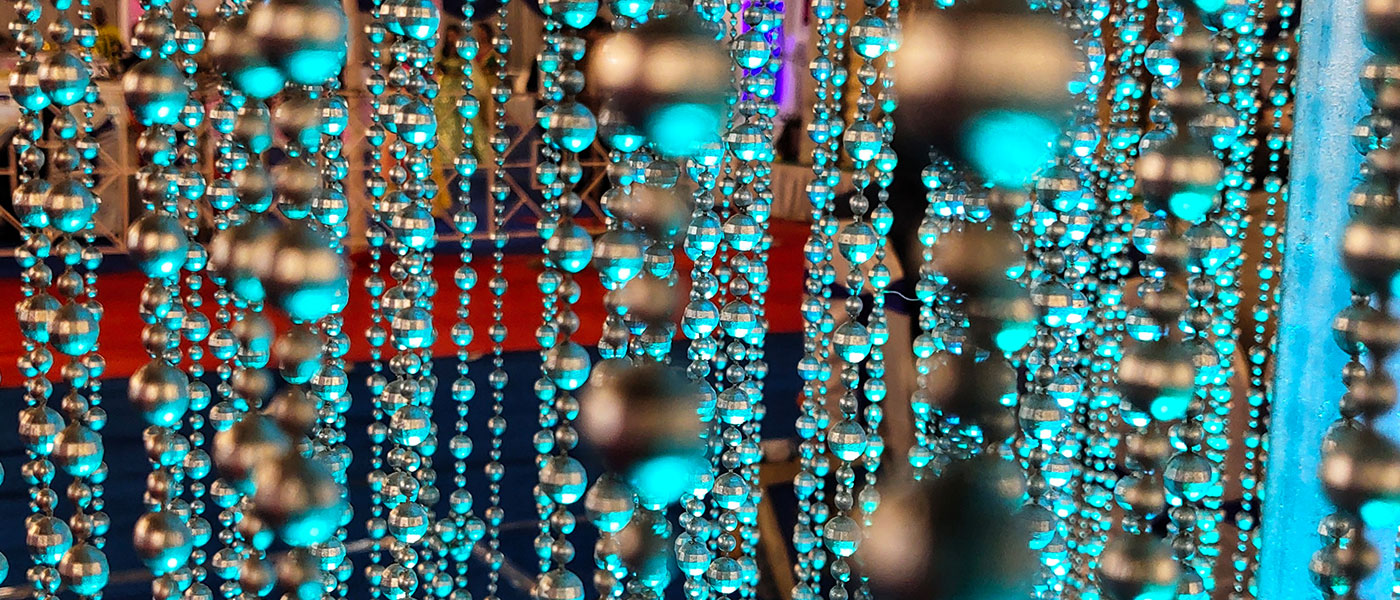
via Case Western Reserve University
Case Western Reserve physicists perfecting new methods for creating ultra-vibrant optical coatings; applications for solar panels, data storage, virtual displays.
Case Western Reserve University physicists are developing ultra-thin optical coatings that could dramatically extend the life of solar panels, as well as improve areas like data storage, or protection against counterfeiting.
“Imagine a world where surfaces not only display vibrant colors, but also serve as efficient energy-harvesting platforms,” said Case Western Reserve physics professor Giuseppe Strangi. “That is the world which we are bringing to light.”
Strangi is leading a research group developing the new optical coatings, which are as thin as a few atomic layers. They can simultaneously transmit and reflect narrow-banded light with unparalleled vividness and purity of the colors.
“They act like as very selective transparent windows and as reflective mirrors,” Strangi said, “and this precision empowers us to manipulate the appearance of reflected light.”
Lengthening the life of solar panels
The most promising possible application for the new optical coatings is extending the life of solar panels, Strangi said.
Solar panels typically last about 20 to 30 years. Among the reasons: Sunlight provides energy but also heats the panel, reducing its short-term efficiency and long-term durability as it breaks down the materials.
That’s because there are two specific bands in the light energy: One (photovoltaic) can be stored as energy, while the other (thermal) heats the panel.
“But, until now, you couldn’t discriminate between the two, so to get the energy, you’d also have to accept the heat,” Strangi said. “Our coatings separate the two, leading a power generation increase in the short term and a sixfold increase in the lifetime of the panel.”
Case Western Reserve obtained a patent on the new materials, Strangi said.
The research group—which includes CWRU physics professor Michael Hinczewski and collaborators at MIT, the University of Arizona and the University of Rochester—is also working with industrial collaborators in the United States and Finland to explore scaling up the technology.
Their findings were recently published in the journal Nature Communications. This most recent work built on the group’s original findings, published in 2021 in Nature Nanotechnology, on what they dubbed “Fano resonant optical coatings.”
Ugo Fano’s legacy of light
The new materials are named for Ugo Fano, an Italian physicist who worked with Enrico Fermi on fission experiments in the 1930s.
Fano’s unique insights were into something called “spectral line shapes,” or visualization of the energy change in a molecule or even a single atom. Strangi’s team has been able to manipulate those Fano line shapes—so, the energy—by bounding discrete states in the continuum using thin film photonics.
Other applications for the new research are varied: New “structural coloring” advances would improve computer display technologies, increase data storage, improve anti-counterfeiting measures and even allow for more variations in decor, Strangi said.
Original Article: Revolutionizing color technology and solar energy
More from: Case Western Reserve University | Massachusetts Institute of Technology | University of Arizona | University of Rochester
The Latest Updates from Bing News
Go deeper with Bing News on:
Ultra-thin optical coatings
- iPhone 16: All the rumours you need to know
The iPhone 16, iPhone 16 Plus, iPhone 16 Pro and iPhone 16 Pro Max, however, are predicted to be vastly different from their predecessors. New reports and rumours land almost weekly, with the oldest ...
- Samsung QN900D Neo QLED 8K review: The best 8K TV you can buy in 2024
My overall take is, the Samsung QN900D is the best 8K TV you can buy in 2024. Do you need it? Probably not. You could get the Samsung QN90D and get as good an experience. But again, the possibility of ...
- Nanomaterials news
In recent years, the exceptional structure and fascinating electrical and optical properties of two-dimensional (2D) layered crystals have attracted widespread attention. Examples of such crystals ...
- Towards transparent and antimicrobial surfaces for touch displays
Researchers report the development of a durable and transparent antimicrobial surface containing copper nanoparticles. The nanostructured surface was obtained by dewetting ultrathin metal copper films ...
- Samsung Galaxy Z Fold 6 Ultra: what we want to see
Such a move would likely require the use of improved ultra-thin glass, but Samsung's display ... periscope telephoto with 5x optical zoom, and a 10MP, f/2.4, telephoto offering 3x optical zoom.
Go deeper with Bing News on:
Structural coloring
- Structural biology articles from across Nature Portfolio
Structural biology is the study of the molecular structure and dynamics of biological macromolecules, particularly proteins and nucleic acids, and how alterations in their structures affect their ...
- David’s Discovery: What is a cold front, how does it work?
1. Fill a plastic container with lukewarm water. 2. Fill a small glass with cold water, ice cubes, and blue food coloring. You could also add blue food coloring to ice cube trays and let the water ...
- Structural materials articles from across Nature Portfolio
Structural materials are materials used or studied primarily for their mechanical properties, as opposed to their electronic, magnetic, chemical or optical characteristics. This can include a ...
- Structural reforms needed to support the ringgit
Structural reforms are a tool of supporting higher economic dividends. Tackling obstacles They tackle obstacles to the fundamental drivers of growth and productivity would boost Malaysia’s ...
- Structural Geology
55, Issue. 9, p. 1073. Lavishly illustrated in color, this textbook takes an applied approach to introduce undergraduate students to the basic principles of structural geology. The book provides ...










